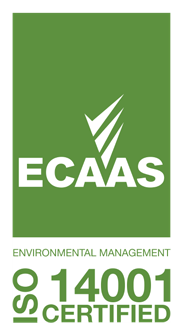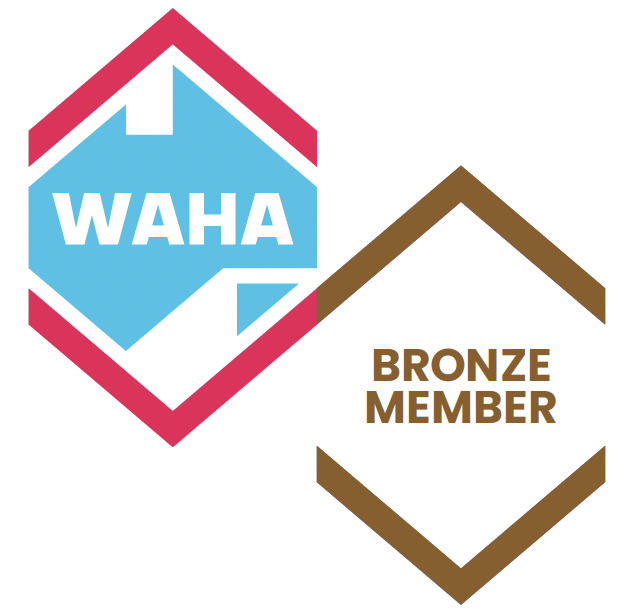At Alta Safety our vision to "make safety an instinctive culture". Regardless of where you are in the world, we stand by the fact everyone has the right to be protected and safe - especially when working at height.
In the following article, we define commonly used and often misunderstood terminology that is used in the height safety and fall protection industry and explore how each of them can be applied to ensure maximum protection, in accordance with the AS/NZS 1891 Industrial Fall-Arrest Systems and Devices Standard – Part 1 to Part 4.
If you have any questions about working at height, or fall protection solutions, please contact Alta Safety - your trusted local height safety and fall protection experts!
Phone: 0800 357 003 (NZ only) or +64 3 357 0093 (International)
Email: design@pbiheightsafety.com
Anchorage Line
A rigid rail or flexible line secured to a anchorage point along which a Type 1 fall-arrest device travels, or a flexible line which unreels from a fall-arrest device.
Anchorage Point
A secure point of attachment to a structure to which a fall-arrest device or anchorage line may be attached.
Anchorage Sling
A sling designed to be placed around a structural element to form an anchorage
Attachment Hardware
Any ring, hook, karabiner, tube-nut connector or other connecting device located in such a position that is must sustain by itself the fall loading of a fall-arrest.
Competent Person
A person who has, through a combination of training education and experience, acquired knowledge and skills enabling that person to correctly perform a specified task.
Configuration
A defined layout of horizontal lifeline in terms of numbers, dispositions and lengths of spans together with defined requirements for line material and strength, and strength of end and intermediate anchorages.
Confined Space
An enclosed or particularly enclosed space that is at atmospheric pressure during occupancy and is not intended or designed primarily as a place of work, and -
a) Is liable to any time to –
i. Have an atmosphere which contains potentially harmful levels of contaminant;
ii. Have an oxygen deficiency or excess; or
iii. Cause engulfment; and
b) Could have restricted mean for entry and exit.
Connection Point
A secure point in a fall-arrest device to which a lanyard may be attached.
End Anchorage
The anchorage at each end of each horizontal lifeline system which is designed to resist bot the lateral tensile forces developed in the line and the directly applied forces at right angles to the line resulting from an arrested fall.
Fall Arrest Device
A self-locking device whose function is to arrest a fall as specified in AS/NZS 1891.3:1999.
In accordance with the AS/NZS 1981.3:1999 standard, fall arrest devices can be classified as follows;
Fall Arrest Device - Type 1
A fall-arrest device which travels along an anchorage line, locks to the line when loaded and can only be loaded in the direction of the line.
Fall Arrest Device - Type 2
A fall-arrest device from which a spring-loaded anchorage line pays out, and which lock when loaded and releases when the load is removed, e.g. an inertia-reel device.
Fall Arrest Device - Type 3
A fall-arrest device from which a spring-loaded anchorage line pays out, which lock when loaded, but may be wound back as a winch after loading and locking.
Fall Arrest System
An assembly of interconnected components comprising a harness connected to an anchorage point or anchorage system either directly or by means of a lanyard or pole straps and whose purpose is to arrest a fall in accordance with the principles and requirements of AS/NZS 1891.4:2007.
Flexible Line
A line comprising of steel wire rope, fibre rope or webbing.
Full Body Harness / Fall Arrest Harness
An assemble of interconnected shoulder and leg-straps, with or without a body belt, designed for attachment to a lanyard, pole strap or fall-arrest device for fall-arrest or work positioning purposes.
Height Safety Equipment Inspector
A person who is competent in the skills needed to detect faults in height safety equipment and to determine remedial action.
Height Safety Manager
A person who is competent in the selection, design, manufacture or installation of height safety systems or equipment, or the development of control measures or work practices.
Height Safety Operator
A person who is able to perform harness-based work at height under the direct supervision of a height safety supervisor.
Height Safety Supervisor
A person who is competent in the skills needed to perform harness-based work at height, to supervise other operators including those at entry level and to participate in first response rescue.
Horizontal Life Rail System
A structurally rigid rail for the attachment of a lanyard or personal fall-arrest device via a mobile attachment device and having a slope not exceeding system manufacturer’s recommendations or, in the absence of such recommendations, three degrees.
Horizontal Lifeline
A horizontal or substantially horizontal line as specified in AS/NZS 1891.2 to which a lanyard may be attached.
Horizontal Lifeline System
A flexible line supported by two or more anchorages such that the lop of a straight line joining any two adjacent anchorages does not exceed the system manufacturer’s recommended slope or, in the absence of such recommendation, five degrees.
Intermediate Anchorage
An anchorage supporting a horizontal lifeline other than at its end.
Karabiner
A connector having a spring-loaded gate with a secondary locking mechanism designed to connect to other connectors or attachment points. See 1891.4 for a further description.
Lanyard
An assemble of a line and component which will enable a connection between a harness and an anchorage, and which will absorb energy in the event of a fall.
Line Energy Absorber
A device placed in series with a horizontal lifeline to absorb energy and reduce the longitudinal forces in the line resulting for a fall-arrest.
Loading of Lines in Service
Flexible line systems shall not be subjected to any operator loading in normal service other than substantially horizontal restraint forces, i.e. they shall not be used for work positioning purposes, unless specifically designed and certified for such use.
Note: A primary reason for this requirement is to prevent creep in any part of the system, such as energy absorbers, which might, over time, alter its fall-arrest performance characteristics.
Lower Body Harness
An assemble of a body belt and leg loop.
Mobile Attachment Device
A device, either purpose designed and built or adapted for the purpose, for the connection of a personal fall-arrest equipment to be a horizontal lifeline or rail, and which can slide along the line or rail.
Personal Energy Absorber
A device or component used in conjunction with a harness which by design reduces the deceleration force imposed by a suddenly arrest fall.
Pole Strap
A work positioning strap designed to be placed around a pole or other vertical structural member and attached at two points, one on each side of a harness whilst the wearer is working on the role.
Restraint Technique
Control on a person’s movement by the use of a fall-arrest system, which entails connection to an anchorage using an adjustable or fixed lanyard or other adjustable component that can be adjusted for length as necessary to physically prevent the person from reaching a position where there is a risk of a free or limited free fall.
Sit Harness
A lower body harness designed to suspend the wearer in a sitting position
Snap Hook
A connector attached to a line or lanyard comprising a hook shaped body with a self-closing, self-locking gate designed to receive a compatible attachment point.
System Acceptance Criteria
Criteria are set for the acceptance of horizontal lifeline and rail systems at three levels as follows:
a) Proprietary Systems
Systems for which the fall-arrest performance of any selected layout design can be determined by a method or program which has been verified by means of performance testing of prototypes over an adequately representative range oflayout configurations.
Note: It should not be implied from the above description that the Standard requires any details of commercially sensitive technology to be revealed.
b) Prescribed Configuration Systems
Systems set up in accordance with configurations prescribed in AS/NZS 1891.2, Supplement I are deemed to comply with this Standard.
c) Rigid Systems
Horizontal life rail systems whose performance can be reliably predicted by design calculation.
Detailed requirements for meeting these criteria are set out in Section 4 of AS/NZS 1891.2:2007 Part 1: Horizontal lifeline and rail systems.
Tube-nut Connector
A connector having a gate comprising a pair of aligned screw thread bridged by a tubular nut.
Types of Falls
Free-Fall / Free-Fall Arrest
A fall or the arrest of a fall where the fall distance before the fall-arrest system beings to take any loading, is in excess of 600mm either vertically or on a slop on which it is not possible to walk without the assistance of a handrail or hand line.
Limited Free-Fall / Limited Free-Fall Arrest
A fall or the arrest of a fall occurring under the condition described in Clause 1.4.4 expect that under reasonably foreseeable circumstances the fall distance will not exceed 600mm.
Restrained Fall / Restrained Fall Arrest
A fall or the arrest of a fall where the person suffers the fall is partially restrained by a pole strap
Work Positioning
Use of a system that enables a person to work supported in a harness in tension in such a way that a fall is prevented.
Did you know?
- More than 50% of falls are from less than three meters (3m).
- A 'workplace' is any place where a worker goes to carry out work, or where work is being carried out.
- All equipment which is in regular use shall be subjected to periodic formal inspection (test and tagging) and where applicable, servicing in accordance with the manufacturer’s instructions and requirements of AS/NZS 1891.4:2009 Industrial Fall-Arrest Systems and Devices, Part 4: Selection, Use and Maintenance.
Have a question or require further information?
If you have any questions about working at height, please contact Alta Safety - your trusted local height safety and fall protection experts!
Phone: 0800 357 003 (NZ only) or +64 3 357 0093 (International)
Email: design@pbiheightsafety.com

 ISO
ISO
 ISO
ISO
 ISO
ISO
 SiteWise
SiteWise
 Masterspec
Masterspec
 Project
Project